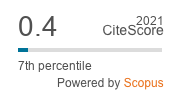Evaluation of some cooking ingredients decontaminating selected vegetables from pesticide residues
DOI:
https://doi.org/10.33307/entomon.v40i3.77Keywords:
Decontamination, pesticide, residue, vegetablesAbstract
The effect of different safe decontaminating substances on two vegetables (okra and curry leaf) grown in Kerala was studied. The plants were sprayed with a mixture of malathion, chlorpyriphos, quinalphos, profenophos, ethion, cypermethrine, fenvalerate and methyl parathion and samples of okrafruit and curry leaf were collected 1 day and 3 days after spraying. Samples were dipped in different decontaminating emulsion/suspension of tamarind 2%, common salt 2%, turmeric 1%, vinegar 2%, lukewarm water and water for 15 minutes and washed in tap water. Residues of different insecticides in these samples were estimated using gas chromatograph equipped with electron capture detector. Data showed that all treatments reduced the insecticides on the two commodities significantly. The effect varied with the insecticides and the crops involved. The decontamination technology using household substances was identified as a desirable approach for solving the insecticide residue problem in agricultural commodities. Standardization of the technique separately for different commodities and insecticides may be necessary based on a sample survey of the pesticides in different commodities in different locations.
Downloads
Published
How to Cite
Issue
Section
License
Copyright (c) 2015 ENTOMON

This work is licensed under a Creative Commons Attribution-ShareAlike 4.0 International License.


